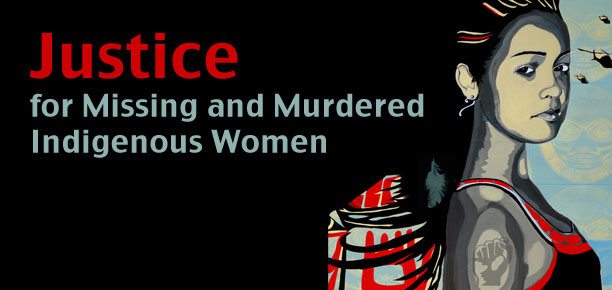
February 5, 2018; LastRealIndians.com
Despite the Violence Against Women Act and the Tribal Law and Order Act of 2010, there is currently no system in place to collect comprehensive data on the number of missing and murdered Native women, which by itself makes Native American women more vulnerable to extreme violence.
On the Last Real Indian blog, Elisabeth Guard, an associate at Galanda Broadman PLLC, describes the introduction of bill WA HB-2951 into the Washington state legislature to address the urgent need for data gathering to provide an accurate understanding of the “epidemic.”
NPQ recently reported on a similar bill introduced in North Dakota, and again (here) how Missing & Murdered Indigenous Women Washington (MMIWW) led the second Seattle Women’s March on January 20, 2018, to give voice to this egregious lapse in government inquiry.
Native women in the United States experience some of the highest rates of sexual assault in the Nation: more than half of Native women will be the victim of domestic violence or sexual assault; four out of five are expected to encounter violence in their lifetimes; one in three will be raped in their lifetime; and the murder rates of Native women exceed ten times the national average in some tribal and urban communities. The most alarming data comes from the Center for Disease Control and Prevention, which reported that in 2016 the third-leading cause of death for Native women between the ages of ten and twenty-four was murder.
Fifteen representatives sponsored this bill that seeks to “order a study to determine how to increase reporting and investigation of missing Native American women.” The bill asserts that state, tribal, and federal agencies need to share resources and partner to properly confront this crisis. According to the bill:
Sign up for our free newsletters
Subscribe to NPQ's newsletters to have our top stories delivered directly to your inbox.
By signing up, you agree to our privacy policy and terms of use, and to receive messages from NPQ and our partners.
By December 1, 2018, the state patrol must report to the legislature on the results of the study, including data and analysis of the number of missing Native American women in the state, identification of barriers in providing state resources to address the issue, and recommendations, including any proposed legislation that may be needed to address the problem.
Guard speaks to similar steps the Canadian government has taken to address its own negligence and investigate why indigenous women are murdered or go missing at such high rates.
The multiple and overlapping governing and justice systems that affect tribal communities have frustrated interest in achieving clarification of the problem, let alone accuracy in reporting. For example, federal and tribal laws apply to members of a tribe unless federal law provides otherwise; tribal courts cannot prosecute non-American Indian and Alaska Native people who commit crimes on tribal lands. In addition to federal jurisdiction, many tribes maintain tribal court systems and jails for tribal members convicted of misdemeanor offenses within the reservation. Federal, state, and local laws apply to members and nonmembers of tribes off the reservation.
That the effort to enforce the gathering of comprehensive data on murdered and missing Native women is only now beginning paints a searing picture of life for indigenous women living on society’s margins. That no one knows for sure how many Native women are missing or how many have been pushed to extremes by official indifference offers a sense of loss that demands a response.
Comments to HB-2951 are being accepted here.—Jim Schaffer













